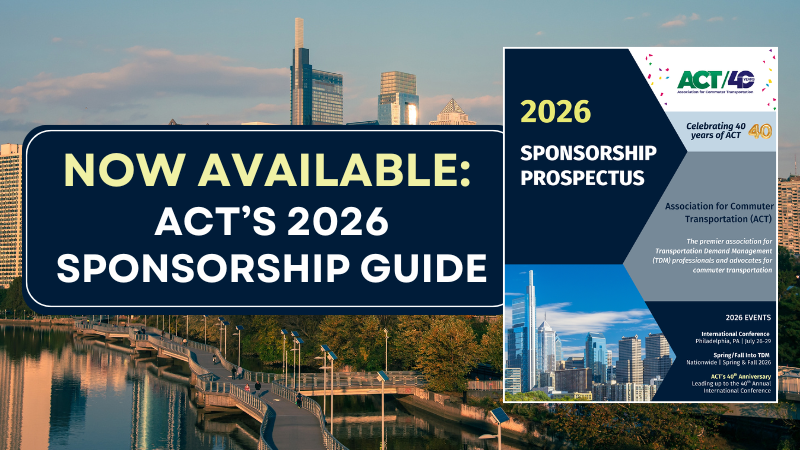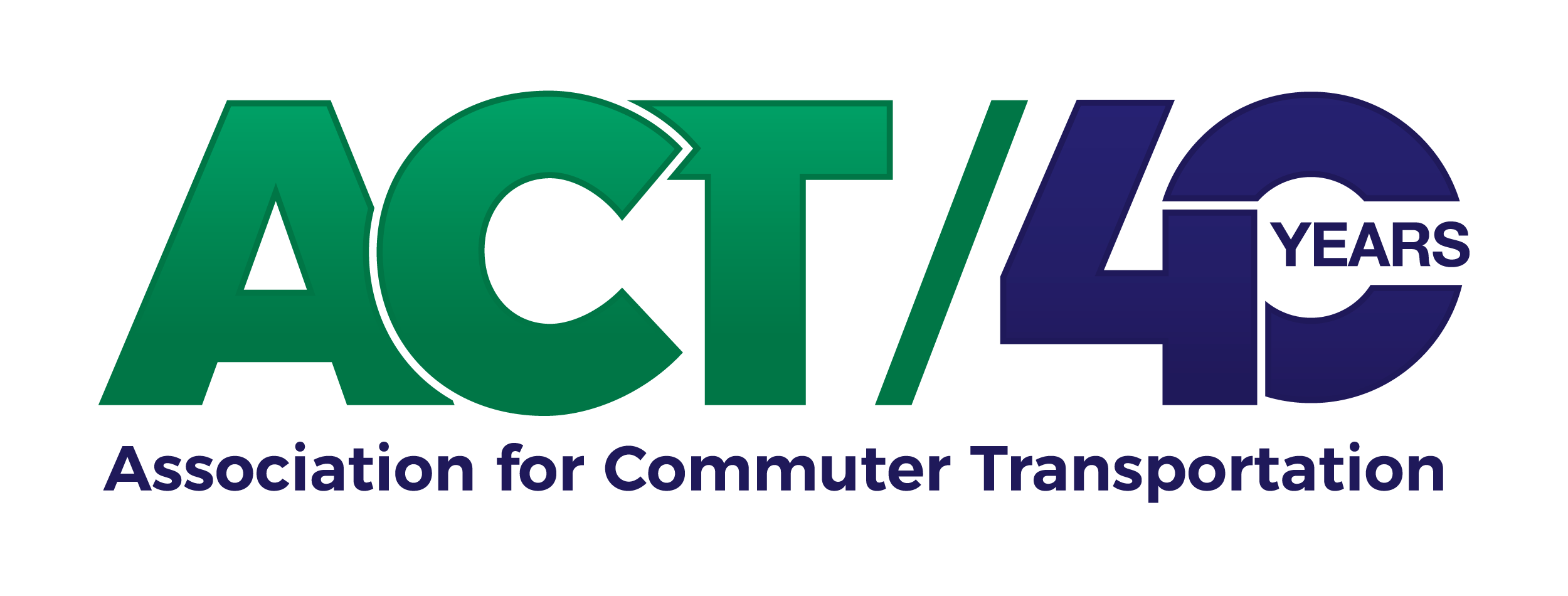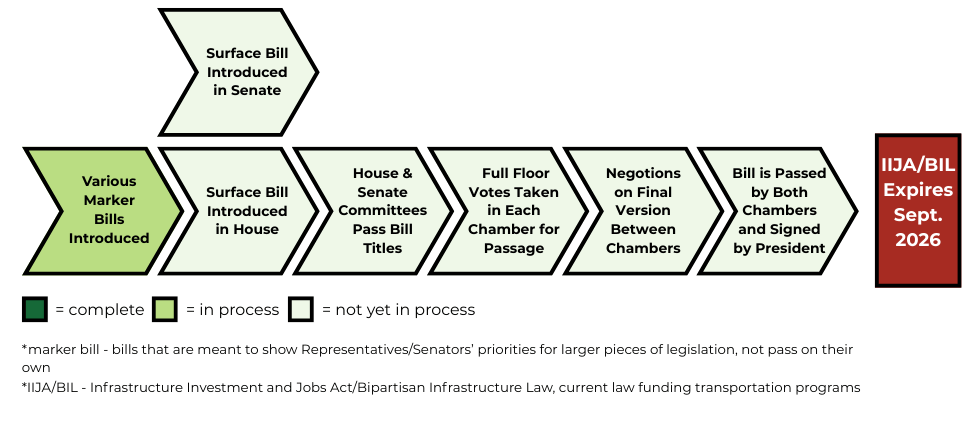Surface Transportation Reauthorization
2025-26
As we prepare for the next Surface Transportation Reauthorization to succeed the expiring Infrastructure Investments and Jobs Act (IIJA), Congress has a vital opportunity to shape a transportation system that promotes efficiency and offers more options to access jobs, move goods, and connect families. ACT believes that strategic investments and policy reforms included in this legislation can significantly improve quality of life, strengthen communities, and support a growing economy. Central to this vision is a stronger federal commitment to Transportation Demand Management (TDM)— a proven, cost-effective set of strategies for communities to maximize existing infrastructure, reduce congestion, and increase access to jobs, education, and essential services.

TDM is a forward-thinking approach that focuses on managing travel demand, helping communities do more with less. From reducing traffic congestion to expanding access to transit, telework, carpooling, and biking, TDM strategies are key to addressing today’s transportation challenges. To fully unlock the benefits of TDM, ACT calls on Congress to streamline federal grant processes, formally recognize TDM in federal law, and ensure rural and areas of persistent poverty have equal access to program funding. Through these common-sense reforms, the Surface Transportation Reauthorization Bill can become a catalyst for smarter, people-centered transportation policy nationwide.
By embedding TDM more fully into federal transportation policy, Congress can deliver a vision of a more connected, efficient, and resilient transportation network – one that improves daily life for millions while supporting long-term economic and community goals.
ACT’s policy recommendations and goals for Surface Transportation Reauthorization are below:
Streamline Federal Grants, Ensure Funding for TDM
Without a codified definition of Transportation Demand Management (TDM), federal funding cannot be dispersed in the most efficient way possible. The Federal Highway Administration (FHWA) Headquarters has indicated that the lack of a clear definition of TDM creates an inconsistent funding mechanism for states and local communities to receive funding, as each Regional FHWA is responsible for allocating these funds.
Our proposed definition of TDM is as follows: “The term ‘Transportation Demand Management’ means the use of strategies to inform and encourage travelers to maximize the efficiency of a transportation system, leading to improved mobility, reduced congestion, and improved air quality, including strategies that use planning, programs, operations, policies, marketing, communications, incentives, pricing, data, and technology.”


